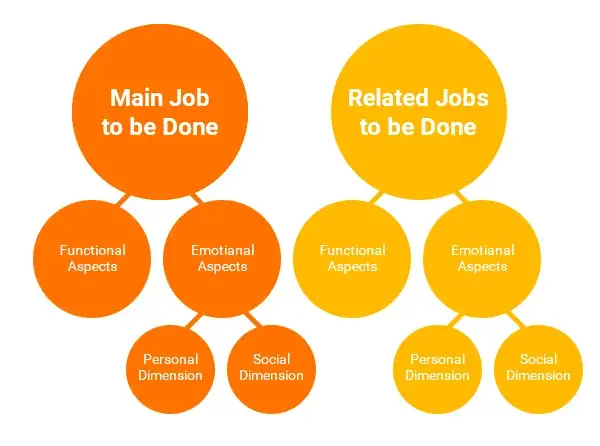Job-to-be-done (JTBD) is an analytical framework used by product teams to understand the customer’s needs, identify new opportunities and create innovative products. By identifying and categorizing jobs customers are trying to get done, defining competitors and creating job statements, project founders and CEOs can use the JTBD framework to prioritize opportunities and ensure their products meet customer expectations.
What Is Job-To-Be-Done?
JTBD is a way of thinking about customers that focuses on understanding why people use certain products or services in order to fulfill a job they need to accomplish. It’s a framework that allows you to uncover customer needs in order to develop better products or services. It helps you focus on what customers are trying to achieve with their purchase, rather than just what they’re buying.
The main benefit of using the JTBD framework is that it helps create customer insight which can be used to improve customer experience. It also allows companies to differentiate themselves from their competition by providing unique solutions tailored specifically for customers’ needs. In addition, this approach can help identify potential new markets & opportunities as well as measure customer satisfaction levels with existing solutions or services.
Identify Jobs Customers Are Trying To Get Done
In order to use the JTBD framework successfully, it’s important to first understand the user’s needs and current solutions available in order to recognize what customers are not satisfied with and why. This process involves gathering data through surveys, interviews and other methods in order to identify areas where there may be potential for improvement or where new solutions may be required. Once these areas have been identified, then it’s time to start categorizing the jobs customers are trying to get done into main jobs & related jobs.
Categorize The Jobs To Be Done
Main jobs are tasks that need completing in order for customers’ desired outcomes & results can be achieved whereas related jobs encompass additional tasks that may need completing before or after a particular job is completed. For example, when someone buys a car they need it serviced regularly so one could say servicing a car is a related job of buying a car (the main job). Knowing how these two types of JTBDs differ will help you determine which ones should be prioritized based on their importance & relevance.
Define Competitors
Knowing what products are in a customer’s consideration set for a particular job is key in gaining insight into your competitors & how you stack up against them. Analyzing current & potential competitors will allow you define how your own product/service stands out from the competition & gain an advantage over them by offering something different or better than what they offer currently.
Create Job Statements
Once you have identified all the relevant JTBDs it’s time to start creating job statements which spell out action verb + object of action + context in which it will be performed clearly & concisely so that they are specific, clear & actionable when presented with customer feedback later on down the line if necessary . This step requires careful thought process & creative writing skills as well as thorough knowledge of user’s needs & desired outcomes so that any potential problems can be addressed right away before finalizing any product/service launch plans . Prioritize JTBD Opportunities Now comes the fun part – prioritizing! Assessing options using Likert Scale -type metrics such as importance , relevance , satisfaction level etc along with evaluating importance customers put on obtaining desired outcomes will help determine which JTBDS should take precedence over others . Measuring satisfaction levels associated with existing solutions or services along with determining impact new solutions might have on customers ‘ overall goals & objectives will shed further light on this decision making process .
Conclusion:
The Job To Be Done Framework is an invaluable tool for project founders and CEOs who want to better understand their users’ needs and create innovative products that exceed expectations . By identifying , categorizing , defining competitors , creating job statements and prioritizing opportunities , businesses can ensure their products meet customer requirements while also gaining insights into current trends within target markets . With careful planning , research , analysis and execution based on insights gained via JTBD Framework businesses can easily stay ahead of competition while providing excellent user experience every single time !


